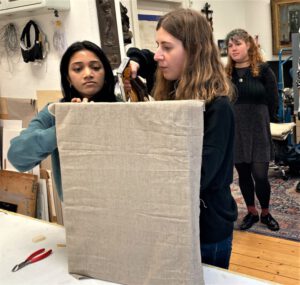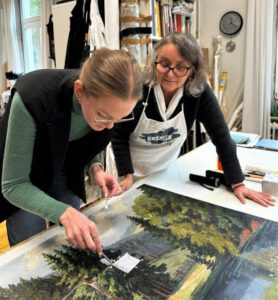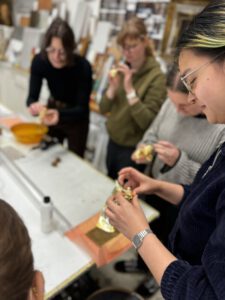Institute for Material Culture
Lecturer at the Carl von Ossietzky University of Oldenburg since 2014
Carl von Ossietzky University was founded in 1973. This makes it one of the young universities in Germany. Its aim is to find answers to the big questions facing society in the 21st century - with interdisciplinary cutting-edge research and teaching.
The researchers and administrative staff work hand in hand and across disciplines. Many are involved in research - for example in Collaborative Research Centres, research groups, European projects or the Cluster of Excellence.
The university works closely with more than 200 universities worldwide. It is also linked to non-university institutions in research, education, culture and business. The research location is further strengthened by the establishment of the Helmholtz Institute for Functional Marine Biodiversity, a Max Planck junior research group and three Fraunhofer working groups. There will also be a Virtual Helmholtz Institute.
The university prepares around 16,000 students for professional life. The spectrum ranges from the humanities and cultural sciences to economics, law and social sciences, as well as mathematics, computer science, natural sciences and medicine.
Lecturer at the Institute for Material Culture since 2014
Carl von Ossietzky University of Oldenburg
Faculty III - Linguistics and Cultural Studies
Institute for Material Culture
Workshops as all-day seminars in the restoration studio
ART-Restauro in Rastede
Topic: "Preventive conservation and problems of restoration"
The following exercises and measures are regularly practised and explained in the restoration studio:
- Significance and evaluation of climate and lighting conditions
- Modern risk and collection management
- Damage factors/potential for damage in museums and exhibition venues
- Museum depot in the context of preventive conservation
- Packaging of works of art during transport
- Explanation of technical terminology
- Exchange of information on specialised literature as well as addresses of institutions, universities and museums, sources, networking
- Explanation of the gilding and silver plating techniques
- Dry cleaning the back of a painting
- Consolidation of the loose paint layer
- Practical exercises with different working materials:
- B.: Assembling a stretcher frame, stretching the canvas, applying different adhesives and consolidants to an oil painting
Impressions
All photos were taken by Ludmila Henseler and published with the permission of the students.






Working with GOLD / Gold leaf always fascinates....
